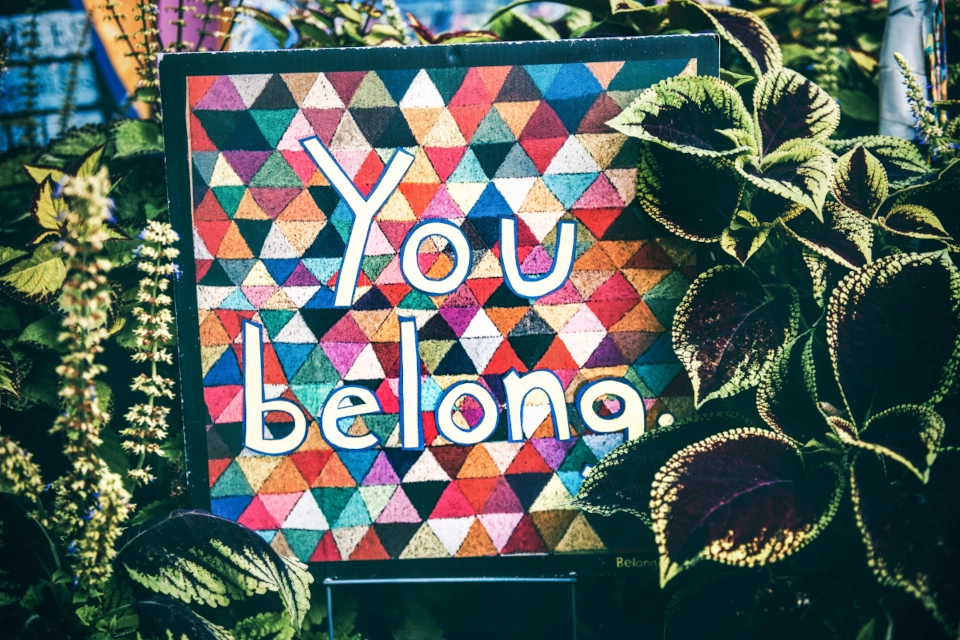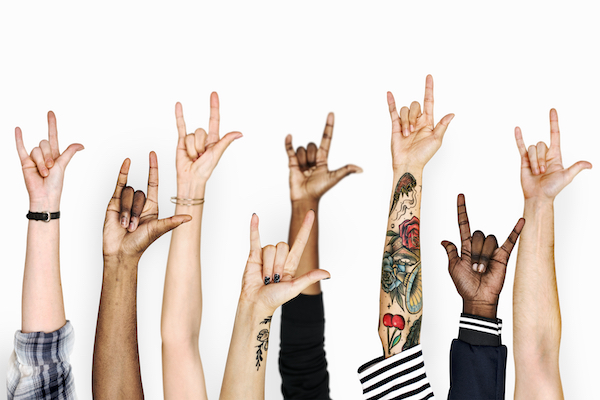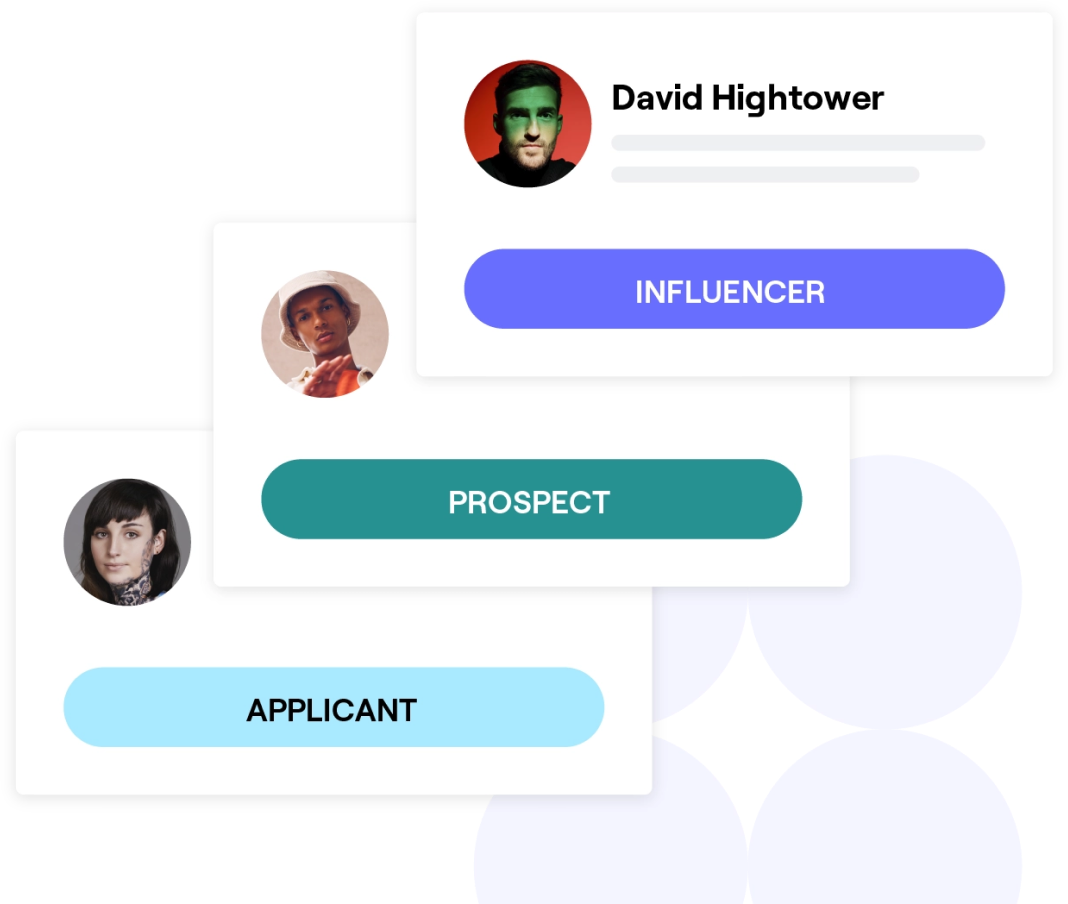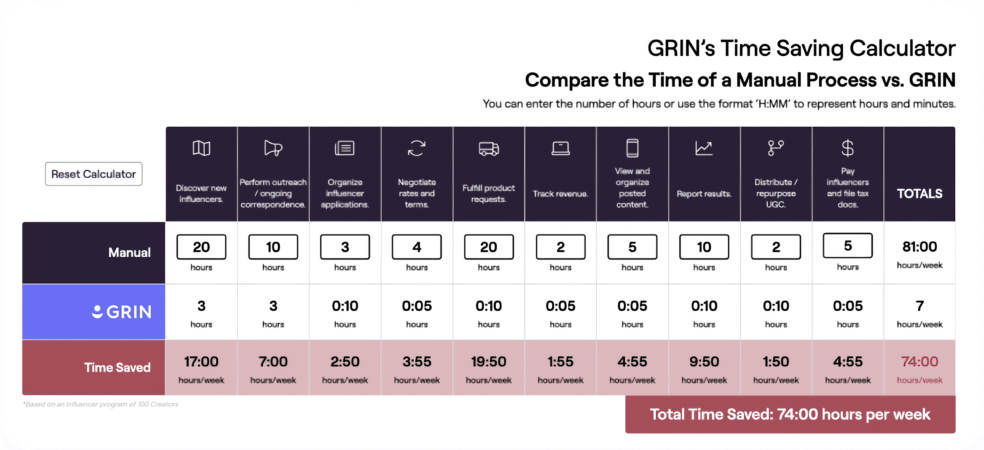In light of recent racial hate crimes, brands and consumers are considering their social values and whether or not they are doing enough to live into those values.
When it comes to diversity and inclusion, what is and isn’t said often sets the tone within social media communities. Brands and their influencers are in a unique position to contribute towards diversity and equality online.

What does diversity and inclusion mean?
Perspectives and methodology are shaped by how well an organization values diversity and inclusion. But these two terms are not interchangeable.
Diversity occurs when people with differing viewpoints are permitted to interact.
With diversity, those engaged tend to get a more well-rounded view of a particular issue, problem, or approach. And while diversity is important, inclusion takes the working environment a step further.
Inclusion occurs when a group or individual seeks out and welcomes differing viewpoints.
The epitome of diversity and inclusion is a high-performing collaborative environment.
The opposite of diversity and inclusion are fear and discrimination. When something makes us uncomfortable, our fears can motivate us to shut it out and defer to those voices that feel safe and familiar. Such behavior is fear-based and a prime example of discrimination.
Why diversity and inclusion are critical
Without diversity and inclusion among marketers and content creators, it’s easy for loud, oppressive voices to silence others. More importantly, unbridled fear and discrimination historically lead to violent crimes against humanity.
An extreme example of fear and discrimination in media is Nazi propagandist Joseph Goebbels. Not only did Goebbels take active steps to silence opposing voices, but he also flooded the media with nativist messages and apocalyptic speech. Within a decade, millions of Jews, academics, homosexuals, and artists were systematically killed by Goebbels’ audience.
But aside from extreme examples of what can happen within a society that suppresses diversity and inclusion, there are less obvious negative effects of deferring only to familiar voices. One of those negative effects is brand decline within competitive markets.
When brands neglect or suppress alternative perspectives, then they experience more difficulty when trying to market or improve their products and services. In many cases, non-diverse organizations simply lose traction in their market and struggle consistently to deliver sustainable profits.
Within organizations, workplace discrimation remains an issue, according to a Gallup poll in 2018 where nearly half of respondents revealed that they “experienced some form of discrimination or harrassment in the last 12 months.” The Gallup study also noted that:
“Organizations with diverse and inclusive team cultures actively create a competitive advantage for themselves by inviting and welcoming a myriad of backgrounds, experiences and viewpoints into their workforce.”
Many other business experts, including the Harvard Business Review, note that diversity and inclusion are essential to better innovation and collective problem-solving. And it makes sense – similar perspectives usually share the same experiences and resources. Varied perspectives have more data and problem-solving techniques to work with.
Brands that seek diversity in their internal and customer-facing initiatives perform better. It’s that simple.
In nearly every industry today, it is surprisingly difficult to remain competitive without diversity and inclusion. And the ways in which brands seek diversity and inclusion in their content marketing can make a significant difference on their bottom line and brand affinity with customers.
What does diversity and inclusion look like in influencer marketing?
Within influencer marketing, there is both a surge of diverse influencer voices and a demand among consumers for their favorite influencers to take a stand on social issues.
Influencer Marketing Trends
“A strong ethical stance features highly as a key consumer desire for the industry. This is particularly popular among younger generations of consumers, with 39.2% of 16-24 year olds agreeing they’d like to see more of an ethical stance from influencers in the future.”
– Takumi, Into the Mainstream: Influencer Marketing in Society
The influencer stereotype of a social media personality sharing a picture-perfect experience is a bit less popular than one would expect. There is a growing desire among social media users to either follow or share raw content.
That said, talented creators and well-spoken thought leaders lead the way. These influencers put into words and art what most social media users can’t do for themselves.
As such, one of the most critical findings in influencer industry research (including Census Wide Survey Consultants and Takumi) is that consumers care about social issues and want their favorite influencers to speak up.
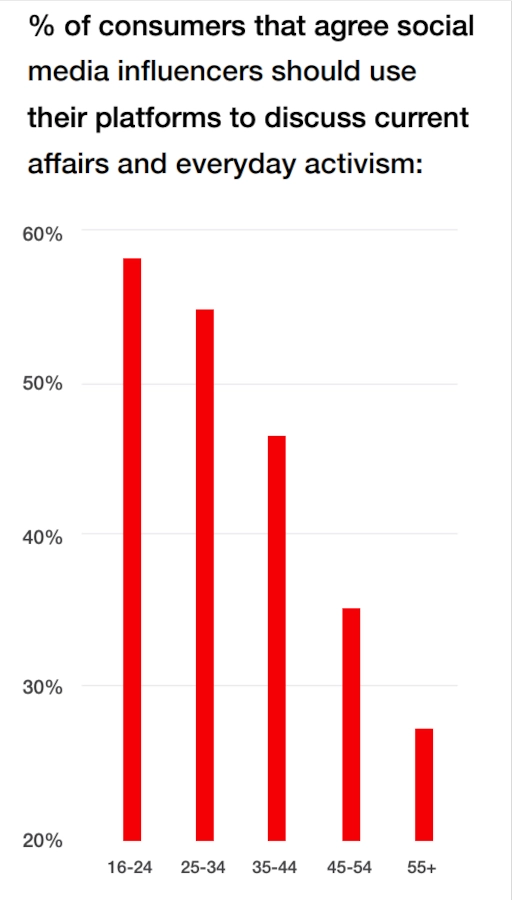
Many influencers are happy to do so. Others are hesitant about aligning their brand with social issues. In the meantime, brands must decide how they will collaborate with their influencer team to make a difference, particularly when certain groups become hate crime targets in that brand’s metaphorical (or literal) back yard.
How influencers are promoting diversity
Some of the best voices about diversity and inclusion come from minority creators. Asian American MILCK (Connie K. Lim), for example, posted part of a song she wrote in reaction to the 2021 Atlanta shooting in response to the later Monterey Park shooting. She included a link in the bio to support the victims of the Monterey Park shooting.
@milckmusic Go gentle this week. Link in bio to support the victims of the Monterey Park shooting. #LNYvictimsfund #montereypark #ibelong #webelong #stopaapihate ♬ original sound – MILCK
Jo Luehmann is a Colombian-American former minister and educator who uses her voice to raise awareness for issues related to white supremacy, LGTBQ+ rights, feminism, and religion.
Recognizing these influencer efforts to promote diversity and inclusion can help brands approach this topic wisely on behalf of their audience and influencer program.
How Brands are Partnering with Influencers to Promote Diversity in Social Media
There are a number of DTC and ecommerce brands that have a strong reputation for diversity and inclusion due to how they use their social media and influencer campaigns.
One of the most famous inclusive marketing brands is Sephora. From the time that the brand launched its Sephora Squad program, it partnered with influencers and ambassadors to include those from often-marginalized communities, such as Middle Eastern women and trans men.
Today, Sephora doesn’t just enjoy diverse social media and influencer engagement, but they also receive a high volume of user-generated content from men, women, LGBTQ+, Middle Eastern, African, Asian, and other traditionally-overlooked nationalities in the cosmetics industry
IKEA’s social media strategy frequently features key opinion leaders from interior design. In celebration of Black History Month in the United States, the IKEA marketing team asked a few of the leading black designers to share “their reflections on life at home” with followers.
The examples above are just a few ways that brands are partnering with influencers to demonstrate inclusive marketing and promote diversity on social media. That said, some of the most important diversity and inclusion decisions that your brand makes will be internal or between you and your influencers.
How can a brand ensure that they are being diverse and inclusive with its influencer marketing?
If there’s one thing that can seriously disrupt your inclusive marketing, it’s giving the appearance that you don’t actually care about social issues even when you say you do, otherwise known as “virtue signalling.” To prevent this, there are a few steps you can take to make sure that your values on diversity and inclusion permeate your influencer program.
Step 1. Take a position on diversity.
Most often, a brand’s position on diversity and inclusion takes place on an executive level. If you operate in the United States, there are also anti-discrimination laws that hold you accountable to basic diversity and inclusion practices.
That said, an active position on diversity and inclusion is both intentional and culturally-driven. Your marketing team can cultivate an inclusive culture by giving minority team members a voice. For example, if a brand wants to take a position in support of the AAPI community, then its leaders should consult members of the AAPI community within the organization.
After active listening and understanding how it can align its diversity and inclusion values to its mission, brands must take a position and create actionable goals for its influencer marketing efforts.
Step 2. Acknowledge diversity within your target audience and audience segments.
A critical step in inclusive marketing is to take note of those in your target audience that represent minority or marginalized groups. Don’t assume that your products and services only serve a specific ethnicity, gender, income bracket, etc.
If you examine your target audience from a diversity standpoint, you’ll most likely identify segments that you didn’t realize you had. After identifying these segments, you can acknowledge them and craft messaging specifically for them.
Step 3. Seek help from influencers on key issues related to diversity and inclusion.
Brands that succeed at influencer marketing know that the well-being of its program depends greatly on its ability to collaborate with its influencer team. Not only are influencers more in tune with what consumers think, but many of them are also on the front lines of social change.
If your influencer team lacks perspective on minority or marginalized community concerns, it means that you need to add more diversity to the team by including more alternative perspectives. Your current influencers may be able to both refer you to those influencers, as well as guide you on curating a more diverse and inclusive influencer marketing strategy.
Step 4. Develop brand communities that promote diversity and inclusion.
One of the best ways to promote diversity and inclusion in your influencer program is to think beyond your active influencer team. Maintaining a diverse customer advocacy program or building value-driven groups that actively invite and welcome people from all backgrounds can accelerate your inclusive marketing efforts.
A diverse brand community will prevent you from virtue signaling and help you maintain authenticity when incorporating voices from various backgrounds into your influencer program.
Best practices for maintaining a diverse and inclusive influencer team
As you take the steps listed above, here are a few things to keep in mind.
Don’t just say. Do.
Words, messaging, and content promoting diversity are important. But if you don’t back up your words with action, then you’re going to come across poorly.
For example, if you say you care about inclusion and diversity, but your ads, influencers, and content only feature one type of community, your followers will most likely tune you out.
Impressions matter.
It can be obnoxious when the public misunderstands what you and your brand are trying to do. But labeling disgruntled customers and fans as “Karens” is not just insensitive, it’s exactly the kind of behavior that unravels your diversity initiatives.
The more input you get from the very people that you want to reach and support, the better your chances of creating the right impression from the beginning of a campaign or initiative. How others perceive your marketing is just as important as what you intend.
Your influencers should be your front lines when it comes to understanding the impression that you make with your target audience.
Be open to negative feedback.
For many brands, they might still make diversity and inclusion mistakes despite their best efforts. When your diversity efforts fail, be quick to absorb feedback (even negative feedback) from your influencers so that you can acknowledge the failure, improve your process, increase your knowledge, and better serve marginalized communities that make up your customer base.
Demand information accuracy from your influencers.
“Almost a quarter of all consumers (25%) are more likely to source news updates and opinions from influencers than journalists and established news outlets.”
– Takumi, Into the Mainstream: Influencer Marketing in Society
2020 has been the year for fake news, conspiracy theories, and general confusion over what is accurate information. Because many consumers are using social media as their main source of news and information, more brands are starting to establish a zero-tolerance policy for fake news and misinformation.
Poor information nearly always escalates conflict. For minorities and marginalized groups, this escalation nearly always impacts them the most.
To protect your brand and audience from the negative effects of misinformation, it’s a good idea to include an information accuracy policy for your influencer program.
In Conclusion
Your influencer program is a great opportunity for your brand to do its part in creating a safer world. Furthermore, collaborating with your influencers on the best ways to promote diversity and inclusion online can enhance your marketing efforts, as well as the quality of your overall influencer program.


